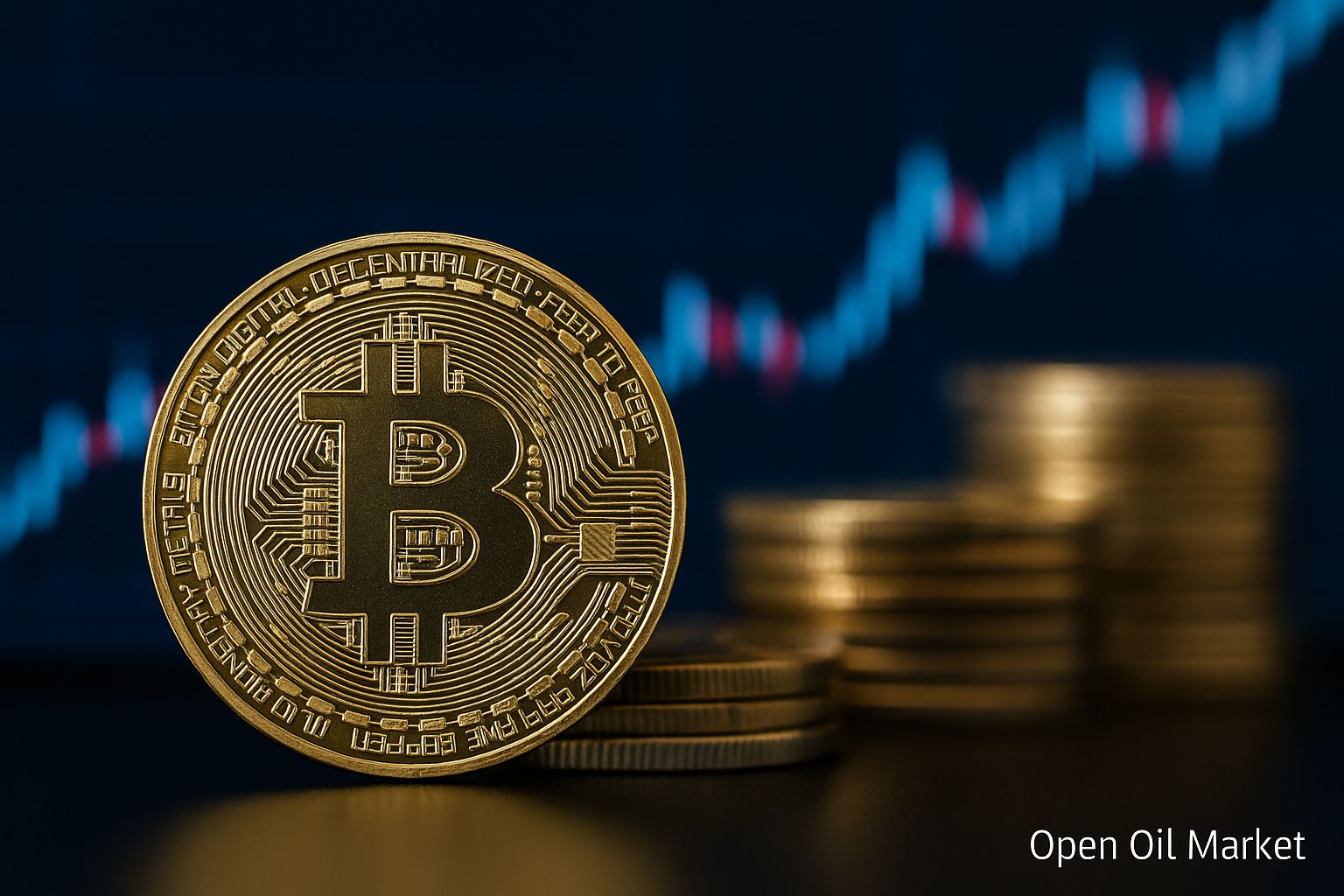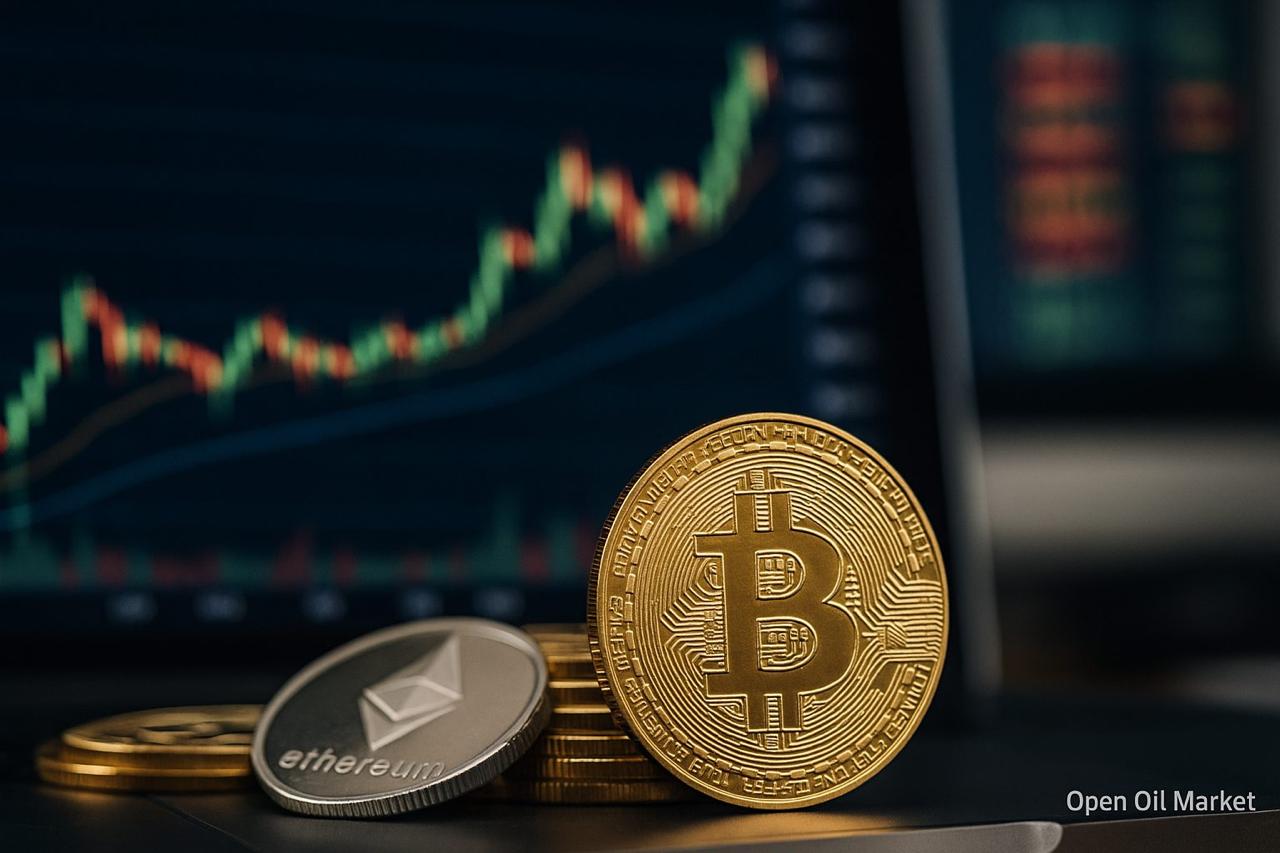
Current Cryptocurrency News for Tuesday, November 4, 2025: Bitcoin Aims for Growth Towards $115,000, Ethereum Remains Around $3,900, and Altcoins Continue to Rise Amid Optimism. Regulatory Signals and Macroeconomic Events Affect Crypto Market Volatility. A Review of Key Events and Trends.
The cryptocurrency market at the beginning of November reflects a moderately positive sentiment. After a consolidation phase, Bitcoin is attempting to resume growth and approach recent highs, while many altcoins are trading positively in line with the market leader. The total market capitalization of digital assets exceeds $3.7 trillion.
Investors are considering external factors such as central bank signals and geopolitical news. In the coming days, key economic data from the U.S. and the Bank of England's decision will be in focus—these events could have short-term impacts on risk appetite. Concurrently, institutional interest in digital assets remains high, with an influx of funds into crypto funds and the launch of new exchange-traded products indicating the gradual maturation of the industry.
- Bitcoin: trading around $105,000–$107,000, aiming to overcome key resistance levels following recent consolidation.
- Ethereum: stable around $3,900; preparing for a major network upgrade in December, which boosts investor confidence.
- Altcoins: Binance Coin (BNB) holds above $1,080, Solana (SOL) around $190, Cardano (ADA) ~ $0.63— all showing positive dynamics over the past few days.
- Meme coins: Dogecoin remains above $0.20 after a price spike, while Shiba Inu (SHIB) consolidates around $0.000011 without a clear trend.
- Institutional players: crypto funds continue to attract capital; the anticipated launch of the first ETF on XRP in mid-November is heightening the interest of major players.
- Regulation: China maintains strict restrictions, while the U.S. and EU discuss new rules for stablecoins and exchanges, and Russia finalizes a bill on digital assets.
Bitcoin Tests Key Levels
The largest cryptocurrency, Bitcoin (BTC), continues to trade near the $107,000 mark, demonstrating resilience following the October correction. In recent days, BTC has consolidated and is now attempting to break through the resistance zone around $115,000–$117,000. Many analysts note that a confident breakout of this range could pave the way for a retest of the historical peak (above $126,000) in the coming weeks, bolstered by the traditionally strong seasonal performance of November. However, the $108,000–$110,000 range remains critical support; staying above it is essential for maintaining the upward trend, and a failure could trigger a correction down to $100,000. Institutional demand continues to support BTC: in October, Bitcoin ETFs attracted billions, and several large companies announced additional purchases. These factors bolster BTC's status as a strategic asset, even amidst ongoing economic uncertainty.
Ethereum and Network Activity
Ethereum (ETH) holds steady around $3,900, slightly retreating from recent local highs above $4,000. At the same time, the Ethereum ecosystem has witnessed record activity: in terms of daily transactions and active addresses, the ETH network is reaching peaks thanks to increased demand for DeFi services and NFTs. Layer 2 solutions (Arbitrum, Optimism, Base) further enhance throughput and lower fees, attracting new users and developers.
Investors are eagerly anticipating the large network upgrade titled "Fusaka," scheduled for December 3, 2025. This upgrade aims to enhance privacy, security, and transaction efficiency within Ethereum, fostering positive expectations surrounding ETH. After a period of volatility, the Ether price has stabilized, and several analysts foresee further growth if the upgrade meets expectations.
Altcoins and Meme Coins
Besides Bitcoin and Ethereum, leading altcoins remain in the spotlight among investors. Binance Coin (BNB) trades above $1,080, driven by high activity within the Binance ecosystem and regular coin burns that reduce supply. Solana (SOL) is positioned around $190, supported by the growth of DeFi and NFT projects on its high-speed blockchain (despite periodic technical issues adding to volatility). Cardano (ADA) holds around $0.63; new projects on the Cardano platform are anticipated, heating up long-term investor interest. XRP also maintains positions above $2.5—its price appears resilient ahead of the expected mid-November listing of the first spot ETF for this token, and Ripple's partnerships with banks continue to bolster confidence in XRP.
Institutional Trends
Amid price fluctuations and technological innovations, institutional investors remain actively engaged with cryptocurrencies. In late October, the first crypto ETFs for Solana, Litecoin, and Hedera launched in the U.S., attracting several tens of millions of dollars in their initial days, even though the tokens soon declined by 3–6% (likely due to profit-taking after the hype). However, the introduction of such products expands opportunities for traditional investors to invest not only in BTC and ETH but also in major altcoins.
Concurrently, interest is rising for a new tool—the spot ETF on XRP, which is set to debut in mid-November. Its arrival is attracting attention from funds and banks looking to gain exposure to the crypto market beyond Bitcoin and Ethereum. Some analysts point out that medium-term forecasts for the overall market remain positive: the favorable news backdrop and influx of capital allow for expectations of further industry growth by the year-end.
Regulation and Global Events
In May 2025, China once again tightened its ban on crypto operations and mining, triggering a temporary market drop of over 10%—highlighting the risks of investments under strict control. In the West, new rules for stablecoins and crypto exchanges are under discussion for the sake of protecting financial stability. The EU is implementing unified crypto regulation (MiCA), while Russia is finalizing a bill aimed at legalizing stablecoins and mining. These initiatives confirm that cryptocurrency has firmly entered the economic agenda.
On the macroeconomic front, central bank decisions and global events remain in the spotlight for crypto investors. The RBA's decision (Australia) to maintain interest rates has supported sentiment in global markets. Market participants are also monitoring U.S. employment data and the results of the Bank of England meeting on November 6—these events could influence risk appetite, causing short-term price fluctuations in cryptocurrencies. Investors need to respond promptly to news from various regions, as changes in policy or economic surprises can swiftly alter market trends.
Top 10 Most Popular Cryptocurrencies
- Bitcoin (BTC) — the first and most valuable cryptocurrency, scarce due to limited issuance (21 million coins), serves as "digital gold." Currently, BTC trades around $112,000, accounting for ~40% of market capitalization.
- Ethereum (ETH) — the second-largest cryptocurrency by market capitalization and the leading smart contract platform. ETH (~$3,950) is widely used in DeFi and NFTs. The transition to Proof-of-Stake has improved network energy efficiency, while further upgrades enhance scalability.
- Tether (USDT) — the largest stablecoin, pegged to the U.S. dollar. It provides high liquidity on exchanges and is widely used for settlements and hedging; a key component of the cryptocurrency market infrastructure.
- USD Coin (USDC) — the second-largest U.S. dollar stablecoin from Circle. Fully backed by fiat reserves and known for high transparency, it is favored by both institutional players and in the DeFi sector.
- Binance Coin (BNB) — the utility token for the Binance exchange and the BNB Chain. It is used to pay for fees (at a discount) and to participate in the platform's services. The ecosystem's growth and regular coin burns support BNB's price (~$1,100).
- Ripple (XRP) — the token for the Ripple payment platform, designed for fast cross-border bank transfers, currently trading around $2.6. Legal victories for Ripple against the SEC and new banking partnerships enhance XRP's prospects; the expected launch of the first ETF could attract additional demand.
- Solana (SOL) — a blockchain platform for DeFi and NFTs, SOL (~$190) is characterized by low fees and high speed, although network outages occasionally add to volatility.
- Cardano (ADA) — a third-generation platform based on a Proof-of-Stake algorithm, developing on a scientific foundation. ADA (~$0.63) is known for its focus on reliability; the development of smart contracts and the ecosystem sustains long-term investor interest.
- Dogecoin (DOGE) — a meme cryptocurrency that gained popularity thanks to community support (and mentions by Elon Musk). DOGE (~$0.21) is used for internet tipping but remains an extremely volatile asset.
- Tron (TRX) — the Tron blockchain platform focused on entertainment. TRX (~$0.31) supports numerous dApps and the issuance of stablecoins (e.g., USDT), strengthening Tron’s position in the digital entertainment industry.
Prospects and Conclusions
The outcomes of the current week largely depend on the interplay of macroeconomic factors and the internal dynamics of the cryptocurrency market. Most analysts maintain a moderately optimistic outlook: historically, November has been favorable for digital assets, and following a recent correction, investors are hopeful for further market recovery. However, levels of uncertainty remain elevated—due both to external economic signals and potential regulatory changes.
- Further growth in Bitcoin and Ethereum is possible if institutional demand and positive news (new ETFs, successful network upgrades) outweigh macroeconomic risks.
- The active development of DeFi and NFT segments, along with the emergence of new blockchain projects, can sustain interest in altcoins and drive their prices upward.
- Restrictive actions by regulators (especially in the U.S., Europe, and China) maintain an uncertainty factor. Investors should carefully monitor decisions by authorities and regulatory bodies that may impact the market.
- Investors are advised to diversify their portfolios and balance risks. It is important to consider both fundamental and technical factors when assessing the market situation.




